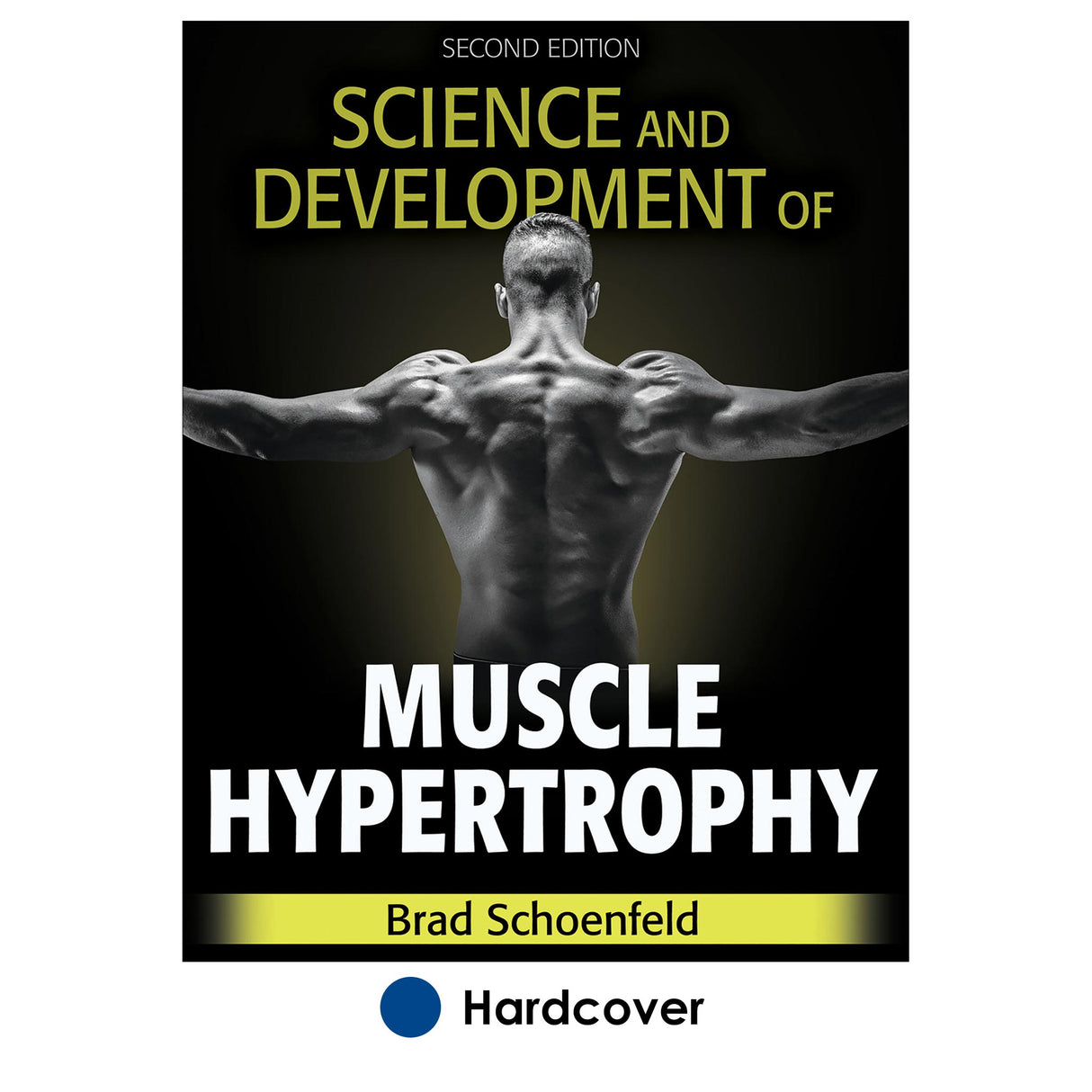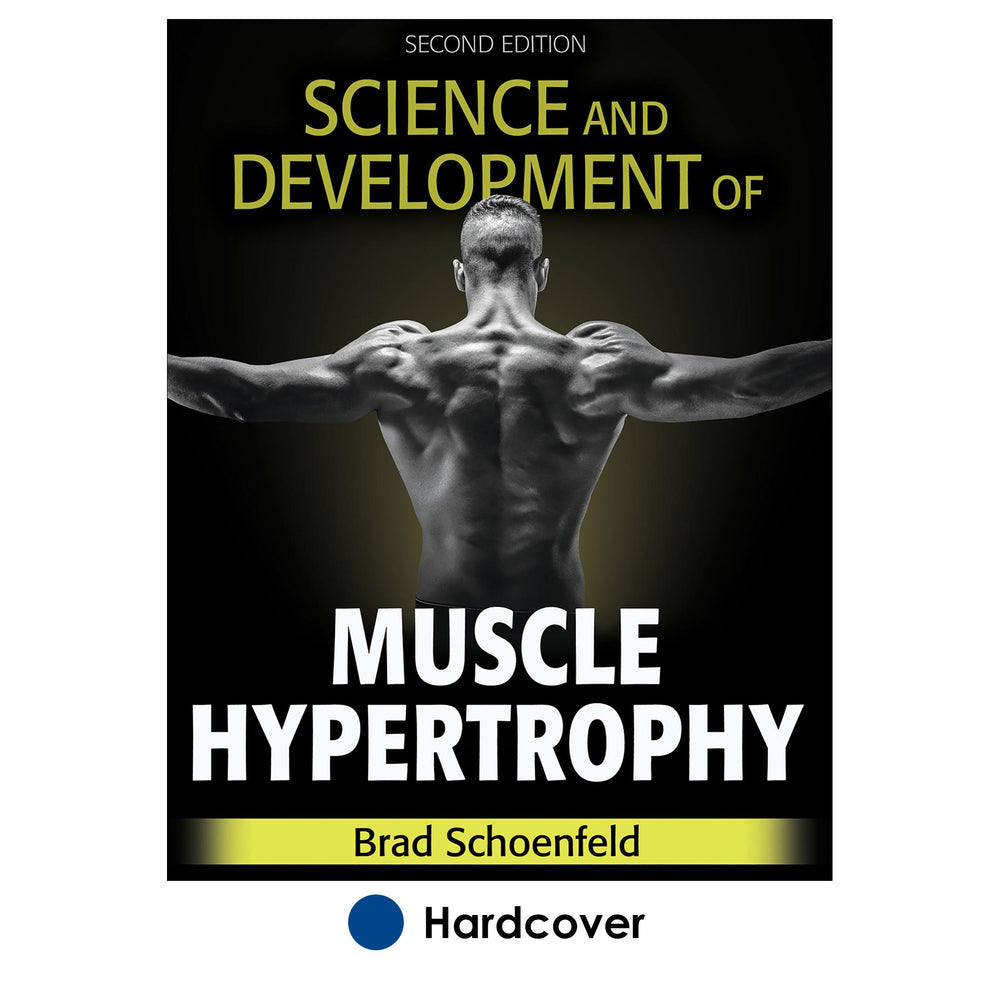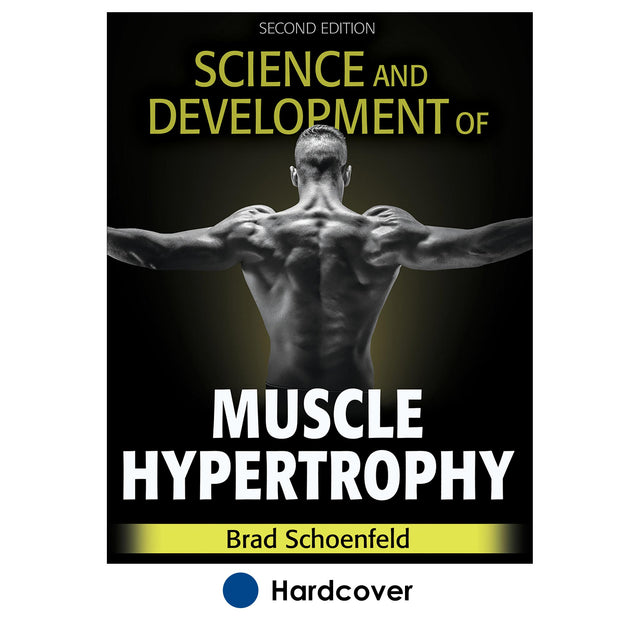Science and Development of Muscle Hypertrophy-2nd Edition
Author: Brad Schoenfeld
$69.00 USD
Unit price
/
Unavailable
Book
$69.00 USD
$69.00 USD
Science and Development of Muscle Hypertrophy, Second Edition, is the most comprehensive resource on muscle hypertrophy in the world. Written by Brad Schoenfeld, PhD, an internationally renowned expert on muscle hypertrophy, this book is the definitive resource for strength and conditioning professionals, personal trainers, sport scientists, researchers, and exercise science instructors who are seeking information regarding muscle hypertrophy, including the mechanism of its development, how the body structurally and hormonally changes when exposed to stress, ways to most effectively design training programs, and nutritional guidelines for eliciting hypertrophic changes.
This new edition offers more than 1,000 references and applied guidelines. Two all-new chapters deliver practical content on the measurement of muscle hypertrophy and advanced training practices. Readers will learn various methods by which hypertrophy is measured, including site-specific measures (circumference measures, MRI, CT, and ultrasound), indirect measures (underwater weighing, DXA, BIA, ADP, and skinfolds), and histological measures (biopsy), as well as the strengths and limitations of each modality. The new edition also provides guidance for achieving greater training volumes with training practices that maximize the individual’s genetic potential to gain muscle.
No other resource offers a comparable amount of content solely focused on the science of muscle hypertrophy and its application to designing training programs. The full-color book offers several features to make the content accessible to readers:
Science and Development of Muscle Hypertrophy is an invaluable resource for those seeking to maximize hypertrophic gains for themselves or their athletes or clients and for those searching for the most comprehensive and authoritative research in the field.
Earn continuing education credits/units! A continuing education course and exam that uses this book is also available. It may be purchased separately or as part of a package that includes all the course materials and exam.
This new edition offers more than 1,000 references and applied guidelines. Two all-new chapters deliver practical content on the measurement of muscle hypertrophy and advanced training practices. Readers will learn various methods by which hypertrophy is measured, including site-specific measures (circumference measures, MRI, CT, and ultrasound), indirect measures (underwater weighing, DXA, BIA, ADP, and skinfolds), and histological measures (biopsy), as well as the strengths and limitations of each modality. The new edition also provides guidance for achieving greater training volumes with training practices that maximize the individual’s genetic potential to gain muscle.
No other resource offers a comparable amount of content solely focused on the science of muscle hypertrophy and its application to designing training programs. The full-color book offers several features to make the content accessible to readers:
- Research Findings sidebars highlight the aspects of muscle hypertrophy currently being examined to encourage readers to re-evaluate their knowledge and ensure their training practices are up to date.
- Practical Applications sidebars outline how to apply the research conclusions for maximal hypertrophic development.
- Comprehensive subject and author indexes optimize the book’s use as a reference tool.
Science and Development of Muscle Hypertrophy is an invaluable resource for those seeking to maximize hypertrophic gains for themselves or their athletes or clients and for those searching for the most comprehensive and authoritative research in the field.
Earn continuing education credits/units! A continuing education course and exam that uses this book is also available. It may be purchased separately or as part of a package that includes all the course materials and exam.
Audience
Reference for strength and conditioning professionals, researchers, and scientists studying muscle hypertrophy; textbook for upper-undergraduate and graduate students in exercise science.
Chapter 1. Hypertrophy-Related Responses and Adaptations to Exercise Stress
Neuromuscular System
Endocrine, Paracrine, and Autocrine Systems
Chapter 2. Mechanisms of Hypertrophy
Mechanical Tension
Metabolic Stress
Muscle Damage
Chapter 3. The Measurement of Muscle Hypertrophy
Indirect Measures
Site-Specific Measures
Chapter 4. Role of Resistance Training Variables in Hypertrophy
Volume
Frequency
Load
Exercise Selection
Type of Muscle Action
Rest Interval Length
Repetition Duration
Exercise Order
Range of Motion
Intensity of Effort
Chapter 5. Advanced Training Practices
Loaded Stretch Training
Intraset Rest Training
Drop Sets
Supersets and Pre-exhaustion
Eccentric Overload Training
Chapter 6. Role of Aerobic Training in Hypertrophy
Hypertrophic Effects From Aerobic-Only Training
Concurrent Training
Chapter 7. Factors in Maximal Hypertrophic Development
Genetics
Age
Sex
Training Status
Chapter 8. Program Design for Maximal Hypertrophy
Biomechanics
Exercise Selection Strategies
Periodization
Chapter 9. Nutrition for Hypertrophy
Energy Balance
Macronutrient Intake
Feeding Frequency
Nutrient Timing
Neuromuscular System
Endocrine, Paracrine, and Autocrine Systems
Chapter 2. Mechanisms of Hypertrophy
Mechanical Tension
Metabolic Stress
Muscle Damage
Chapter 3. The Measurement of Muscle Hypertrophy
Indirect Measures
Site-Specific Measures
Chapter 4. Role of Resistance Training Variables in Hypertrophy
Volume
Frequency
Load
Exercise Selection
Type of Muscle Action
Rest Interval Length
Repetition Duration
Exercise Order
Range of Motion
Intensity of Effort
Chapter 5. Advanced Training Practices
Loaded Stretch Training
Intraset Rest Training
Drop Sets
Supersets and Pre-exhaustion
Eccentric Overload Training
Chapter 6. Role of Aerobic Training in Hypertrophy
Hypertrophic Effects From Aerobic-Only Training
Concurrent Training
Chapter 7. Factors in Maximal Hypertrophic Development
Genetics
Age
Sex
Training Status
Chapter 8. Program Design for Maximal Hypertrophy
Biomechanics
Exercise Selection Strategies
Periodization
Chapter 9. Nutrition for Hypertrophy
Energy Balance
Macronutrient Intake
Feeding Frequency
Nutrient Timing





 Circumference measurements
Circumference measurements Mechanotransduction
Mechanotransduction Protein translation and transcription
Protein translation and transcription Table 4.1 and practical applications
Table 4.1 and practical applications